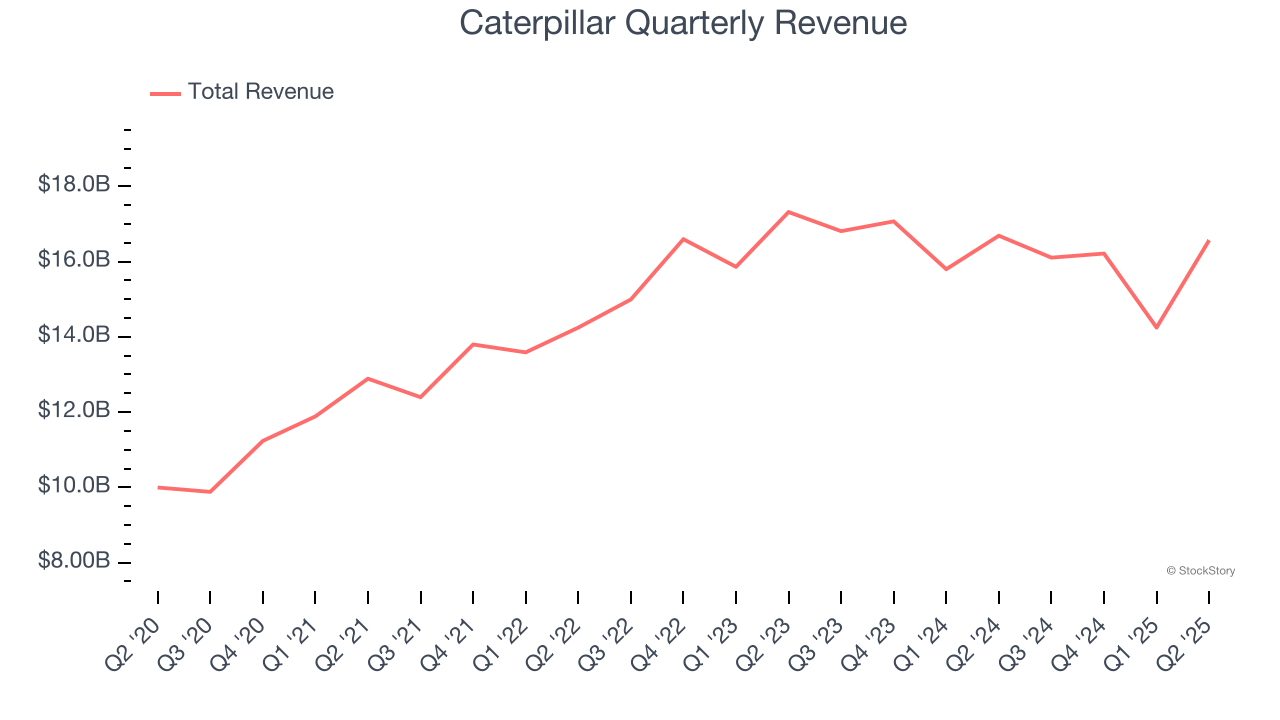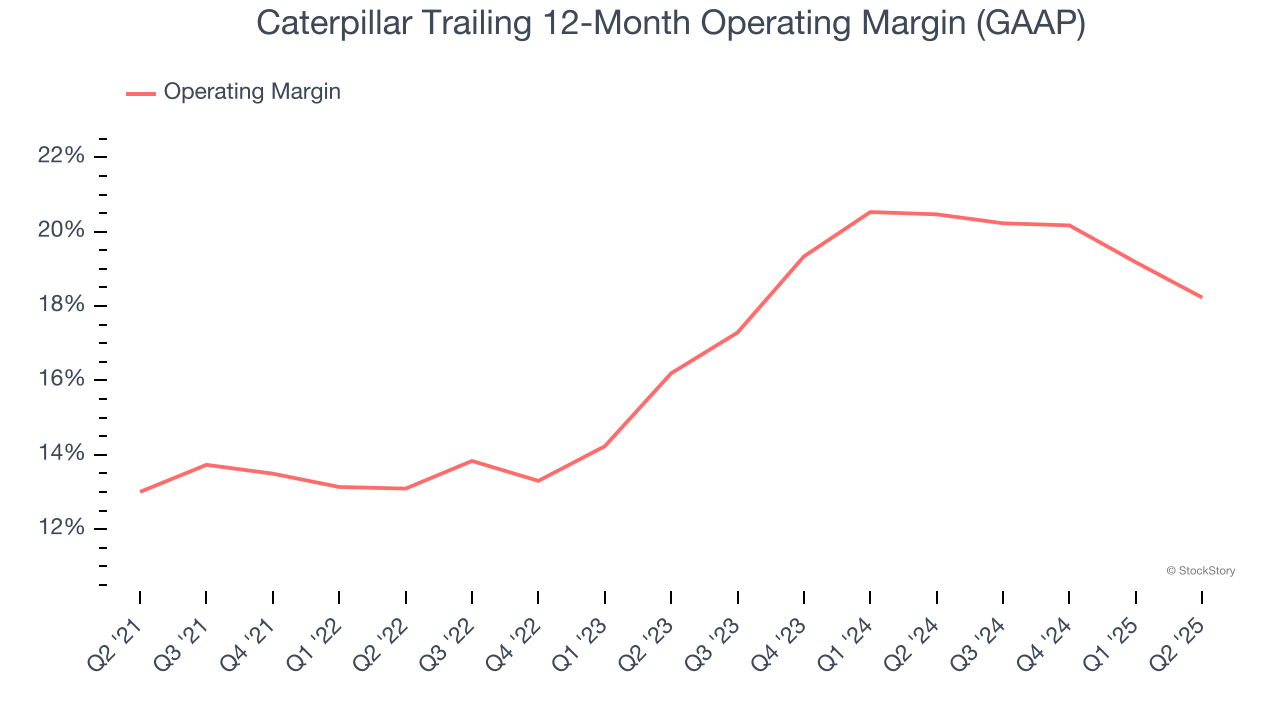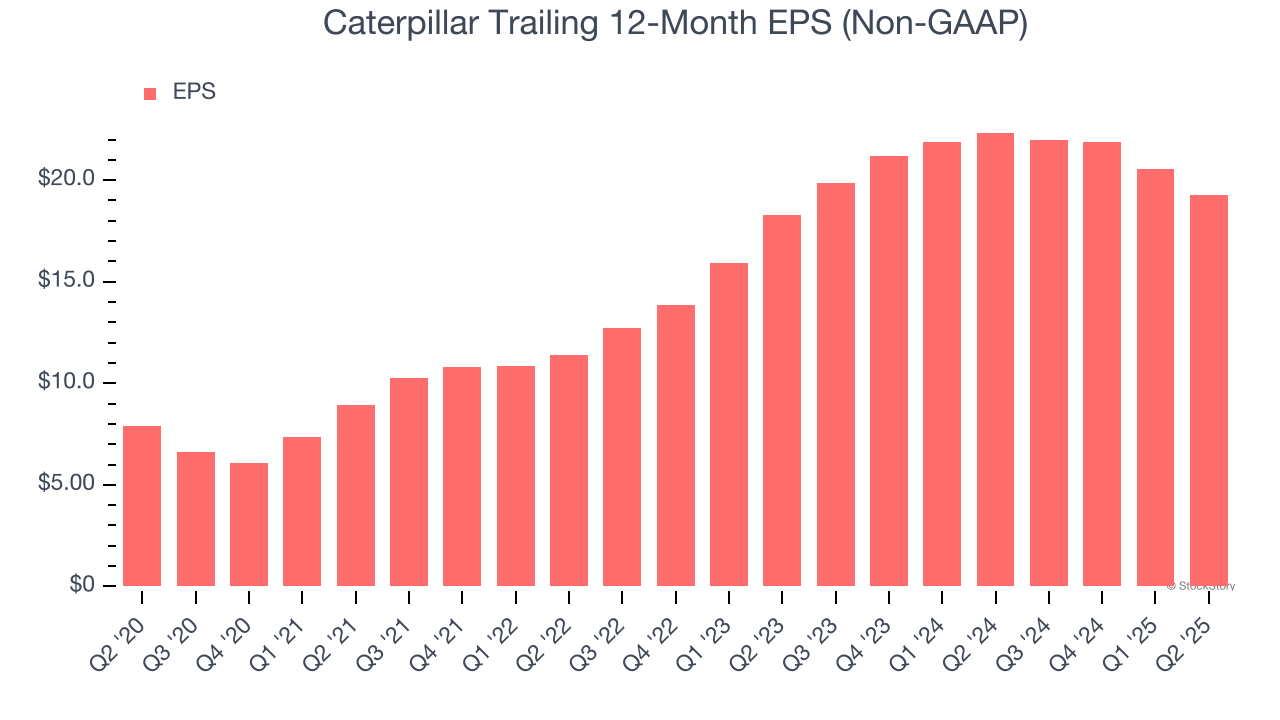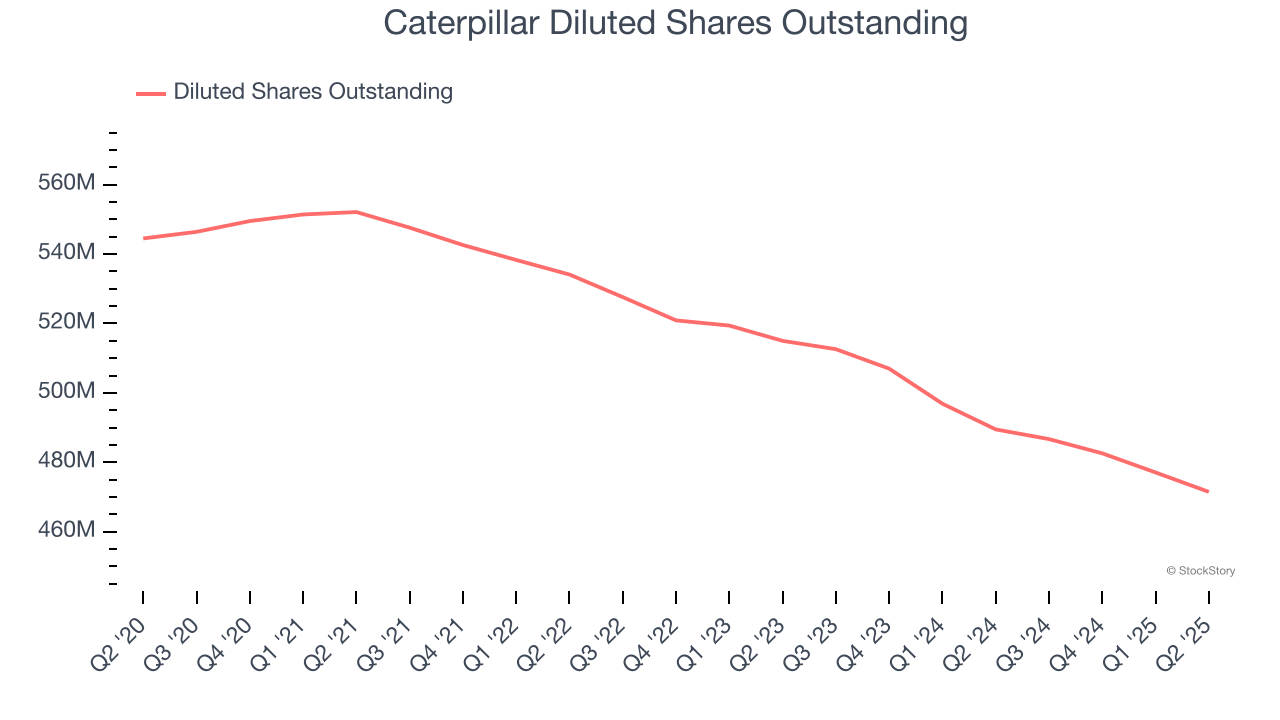
Construction equipment company Caterpillar (NYSE: CAT) reported revenue ahead of Wall Street’s expectations in Q2 CY2025, but sales were flat year on year at $16.57 billion. Its non-GAAP profit of $4.72 per share was 3.7% below analysts’ consensus estimates.
Is now the time to buy Caterpillar? Find out by accessing our full research report, it’s free.
Caterpillar (CAT) Q2 CY2025 Highlights:
- Revenue: $16.57 billion vs analyst estimates of $16.38 billion (flat year on year, 1.2% beat)
- Adjusted EPS: $4.72 vs analyst expectations of $4.90 (3.7% miss)
- Adjusted EBITDA: $3.37 billion vs analyst estimates of $3.50 billion (20.3% margin, 3.7% miss)
- Operating Margin: 17.3%, down from 20.9% in the same quarter last year
- Free Cash Flow Margin: 15.7%, similar to the same quarter last year
- Market Capitalization: $204 billion
"The Caterpillar team remained focused on customer success and demonstrated solid operational performance this quarter," said CEO Joe Creed.
Company Overview
With its iconic yellow machinery working on construction sites, Caterpillar (NYSE: CAT) manufactures construction equipment like bulldozers, excavators, and parts and maintenance services.
Revenue Growth
Examining a company’s long-term performance can provide clues about its quality. Even a bad business can shine for one or two quarters, but a top-tier one grows for years. Unfortunately, Caterpillar’s 6.3% annualized revenue growth over the last five years was mediocre. This was below our standard for the industrials sector and is a rough starting point for our analysis.

We at StockStory place the most emphasis on long-term growth, but within industrials, a half-decade historical view may miss cycles, industry trends, or a company capitalizing on catalysts such as a new contract win or a successful product line. Caterpillar’s performance shows it grew in the past but relinquished its gains over the last two years, as its revenue fell by 1.3% annually. Caterpillar isn’t alone in its struggles as the Construction Machinery industry experienced a cyclical downturn, with many similar businesses observing lower sales at this time. 
This quarter, Caterpillar’s $16.57 billion of revenue was flat year on year but beat Wall Street’s estimates by 1.2%.
Looking ahead, sell-side analysts expect revenue to grow 2% over the next 12 months. Although this projection implies its newer products and services will catalyze better top-line performance, it is still below average for the sector.
Unless you’ve been living under a rock, it should be obvious by now that generative AI is going to have a huge impact on how large corporations do business. While Nvidia and AMD are trading close to all-time highs, we prefer a lesser-known (but still profitable) stock benefiting from the rise of AI. Click here to access our free report one of our favorites growth stories.
Operating Margin
Operating margin is an important measure of profitability as it shows the portion of revenue left after accounting for all core expenses – everything from the cost of goods sold to advertising and wages. It’s also useful for comparing profitability across companies with different levels of debt and tax rates because it excludes interest and taxes.
Caterpillar has been a well-oiled machine over the last five years. It demonstrated elite profitability for an industrials business, boasting an average operating margin of 16.5%. This result was particularly impressive because of its low gross margin, which is mostly a factor of what it sells and takes huge shifts to move meaningfully. Companies have more control over their operating margins, and it’s a show of well-managed operations if they’re high when gross margins are low.
Analyzing the trend in its profitability, Caterpillar’s operating margin rose by 5.2 percentage points over the last five years, as its sales growth gave it operating leverage.

This quarter, Caterpillar generated an operating margin profit margin of 17.3%, down 3.6 percentage points year on year. Since Caterpillar’s operating margin decreased more than its gross margin, we can assume it was less efficient because expenses such as marketing, R&D, and administrative overhead increased.
Earnings Per Share
We track the long-term change in earnings per share (EPS) for the same reason as long-term revenue growth. Compared to revenue, however, EPS highlights whether a company’s growth is profitable.
Caterpillar’s EPS grew at an astounding 19.5% compounded annual growth rate over the last five years, higher than its 6.3% annualized revenue growth. This tells us the company became more profitable on a per-share basis as it expanded.

We can take a deeper look into Caterpillar’s earnings to better understand the drivers of its performance. As we mentioned earlier, Caterpillar’s operating margin declined this quarter but expanded by 5.2 percentage points over the last five years. Its share count also shrank by 13.4%, and these factors together are positive signs for shareholders because improving profitability and share buybacks turbocharge EPS growth relative to revenue growth. 
Like with revenue, we analyze EPS over a shorter period to see if we are missing a change in the business.
For Caterpillar, its two-year annual EPS growth of 2.7% was lower than its five-year trend. We hope its growth can accelerate in the future.
In Q2, Caterpillar reported adjusted EPS at $4.72, down from $5.99 in the same quarter last year. This print missed analysts’ estimates, but we care more about long-term adjusted EPS growth than short-term movements. Over the next 12 months, Wall Street expects Caterpillar’s full-year EPS of $19.28 to grow 3.1%.
Key Takeaways from Caterpillar’s Q2 Results
It was good to see Caterpillar narrowly top analysts’ revenue expectations this quarter. On the other hand, its EPS missed and its EBITDA fell short of Wall Street’s estimates. Overall, this was a softer quarter. The stock traded down 3.1% to $420.48 immediately after reporting.
Caterpillar underperformed this quarter, but does that create an opportunity to invest right now? The latest quarter does matter, but not nearly as much as longer-term fundamentals and valuation, when deciding if the stock is a buy. We cover that in our actionable full research report which you can read here, it’s free.






